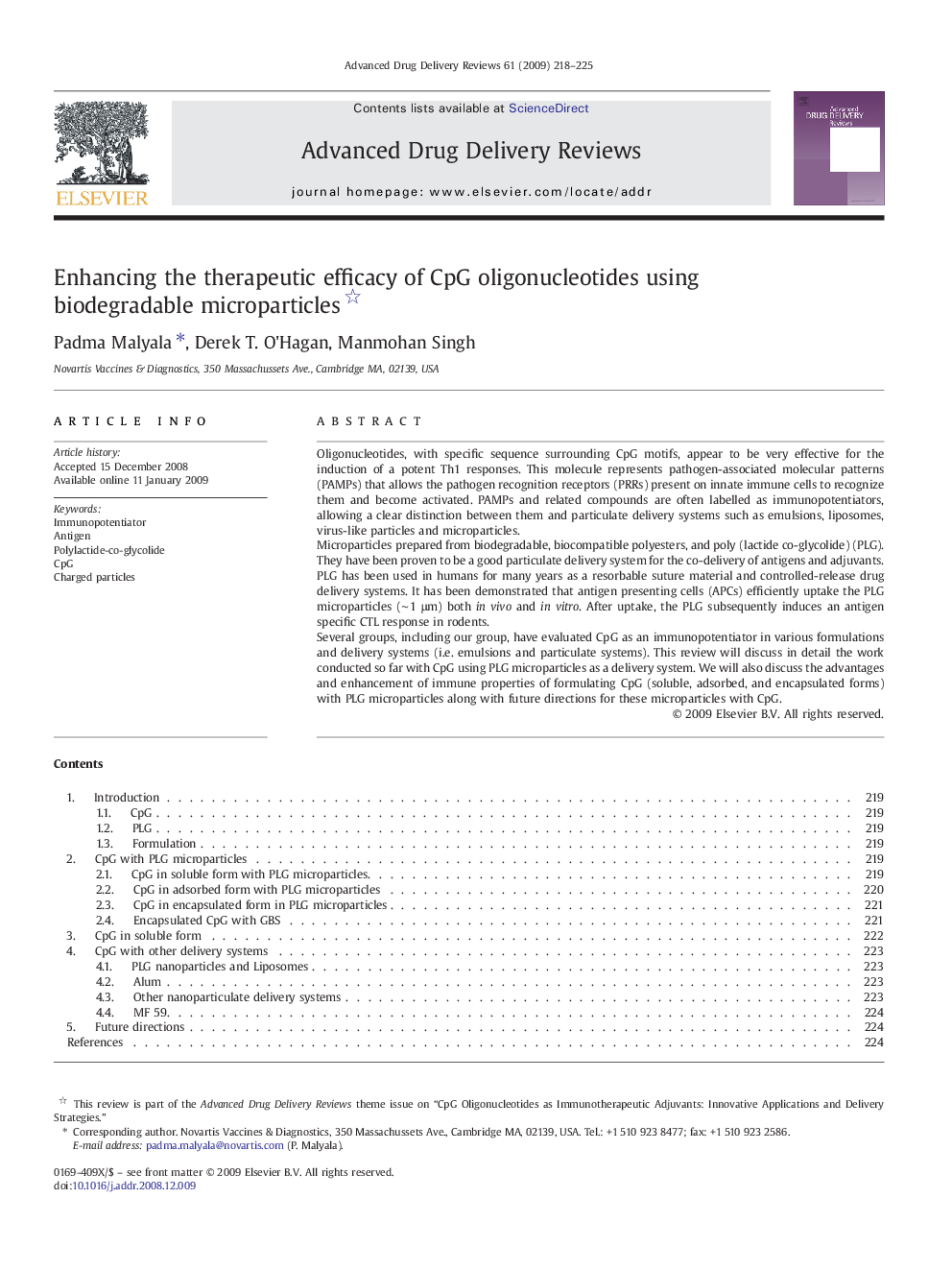| Article ID | Journal | Published Year | Pages | File Type |
|---|---|---|---|---|
| 2071625 | Advanced Drug Delivery Reviews | 2009 | 8 Pages |
Oligonucleotides, with specific sequence surrounding CpG motifs, appear to be very effective for the induction of a potent Th1 responses. This molecule represents pathogen-associated molecular patterns (PAMPs) that allows the pathogen recognition receptors (PRRs) present on innate immune cells to recognize them and become activated. PAMPs and related compounds are often labelled as immunopotentiators, allowing a clear distinction between them and particulate delivery systems such as emulsions, liposomes, virus-like particles and microparticles.Microparticles prepared from biodegradable, biocompatible polyesters, and poly (lactide co-glycolide) (PLG). They have been proven to be a good particulate delivery system for the co-delivery of antigens and adjuvants. PLG has been used in humans for many years as a resorbable suture material and controlled-release drug delivery systems. It has been demonstrated that antigen presenting cells (APCs) efficiently uptake the PLG microparticles (∼ 1 μm) both in vivo and in vitro. After uptake, the PLG subsequently induces an antigen specific CTL response in rodents.Several groups, including our group, have evaluated CpG as an immunopotentiator in various formulations and delivery systems (i.e. emulsions and particulate systems). This review will discuss in detail the work conducted so far with CpG using PLG microparticles as a delivery system. We will also discuss the advantages and enhancement of immune properties of formulating CpG (soluble, adsorbed, and encapsulated forms) with PLG microparticles along with future directions for these microparticles with CpG.
